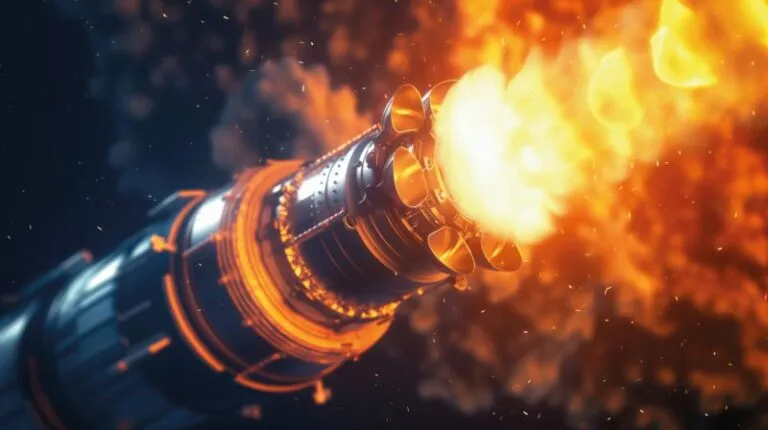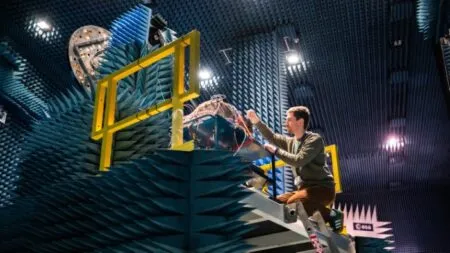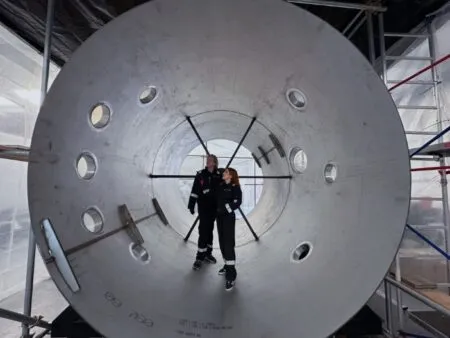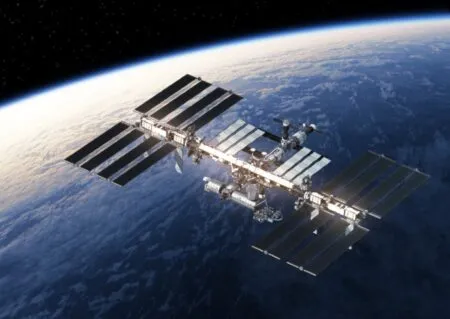Space is changing. Commercial missions are heading to the moon, and more launches are happening than ever before, shifting satellites and astronauts into orbit. Meanwhile, engineers are striving to reduce the cost and complexity of space access with innovative launch technologies and larger and reusable rockets.
But when a spacecraft reaches orbit its journey is only just beginning. In-space propulsion systems are used to put and maintain satellites into position or send spacecraft further into space. The work to test and develop these propulsion systems is just as significant as launch systems and is increasing in scope and scale.
Commercial Lunar Payloads
Six missions in total this year are running under NASA’s Commercial Lunar Payload Services (CLIPS) program. The first two highlighted the importance of propulsion systems in different ways.
In January, Astrobiotic’s Peregrine One mission to the moon was aborted after its propulsion system failed to ignite. A month later Intuitive Machines lander Odysseus reached the moon using a proprietary propulsion system the company had developed for the lander. The liquid methane and liquid oxygen-powered propulsion system managed the first-ever deep space ignition, followed by multiple restarts. Unfortunately, a navigation system fail meant Odysseus landed lopsided.
Intuitive, Astrobotic and another US firm Firefly will fly more CLIPS missions this year. CLIPS is the first stage of a return to the moon for the USA. The first manned missions to the Moon for Artemis are planned for September 2025. A key part of Artemis is Gateway, a space station that NASA plans to put into orbit around the Moon. Gateway will provide support for lunar surface missions, a destination for science, and serve as a staging point for further deep space exploration.
Gateway will be fitted with three AEPS (Advanced Electric Propulsion System) thrusters to maintain its orbit around the Moon. AEPS is a solar electric Hall Effect Thruster (HET) in which the propellant is ionized and accelerated by an electric field to produce thrust.
A single AEPS thruster can provide up to 12kW of propulsive power – more than twice as powerful than current in-space electric propulsion systems. The AEPS thruster recently returned to NASA Glenn to continue qualification testing to certify the thrusters for flight.
Powering up
Several companies are looking to increase the power of electric propulsion systems. One of the possible power sources being considered is nuclear reactors. Dr James Lambert is head of operations at UK-based Pulsar Fusion, a developer of electric space propulsion systems and nuclear fusion technology.

Lambert says, “Our mission statement is to develop technology for nuclear fusion, but fundamentally we are a propulsion systems company. Our strategy is to fund the fusion research from the propulsion systems business.
“There is an overlap between the two fields in terms of plasma physics, magnetic fields and computational modeling. The largest difference is that you can sell electric propulsion systems today, whereas fusion is a mid-term ambition.”
Pulsar’s latest work has involved building and testing a 10kW HET at the University of Southampton as part of a 12-month project for the UK’s Space Agency. The thruster was developed to be combined with a nuclear reactor. A concept reactor has been designed at Cambridge University. “The program aims to find out what a propulsion system powered by a nuclear reactor would look like,” says Lambert.
The answer is – large and probably connected in batches. “No one else in Europe is making and selling Hall Effect Thrusters this big. The industry is only just arriving at the need for this size of thruster,” says Lambert. “The other key feature of this thruster is that it is long-lasting – the exhaust is magnetically shielded so it doesn’t erode over time and get eaten away by its exhaust.”
The thruster uses a magnetic field to deflect the extremely hot plasma it emits that would otherwise erode its structure.
The test campaign at Southampton lasted for two weeks, during which time the test article was placed on a thrust balance inside a vacuum chamber. The chamber has a pump fitted to the end to suck out the plasma.
The data gathered from the testing is being used to characterize performance, validate modeling and will help make “sensible conclusions” about how the HET design could be further increased in size, says Lambert.
“We have the people and the facilities to do this research and testing, but there is always a pressure to increase in size. The larger the thruster, the more plasma there is to suck out. Testing gets expensive. We are looking at ways of solving these challenges.”
Future spacecraft will need much larger propulsion systems and power sources believes Lambert: “Our clients have a high level of ambition for the next generation of spacecraft – space tugs, mining and interplanetary spacecraft – that can only be met with powerful electrical propulsion systems.”
Ultimately Pulsar’s technology roadmap aims to combine the areas of nuclear fusion research and electrical space propulsion to develop a nuclear fusion-powered rocket. First and foremost though, Lambert is working to meet the needs of the space sector. “The plan is to develop the HET business to support the development of the fusion reactor,” he says. “At our core we are a profitable propulsion systems company that is looking far ahead.”
Electrical limitations
The electric propulsion systems sold by Pulsar and similar companies can be used to move satellites in orbit. Typically, three to six 1kW thrusters are fitted to satellites of around 1-200kg, occasionally as heavy as a tonne, but power output always remains in the single digits.
Although growing in popularity, electric thrusters do not currently represent the bulk of the in-space propulsion market. There is only one major supplier in Europe, and their low flow rates mean they are difficult and lengthy to test.
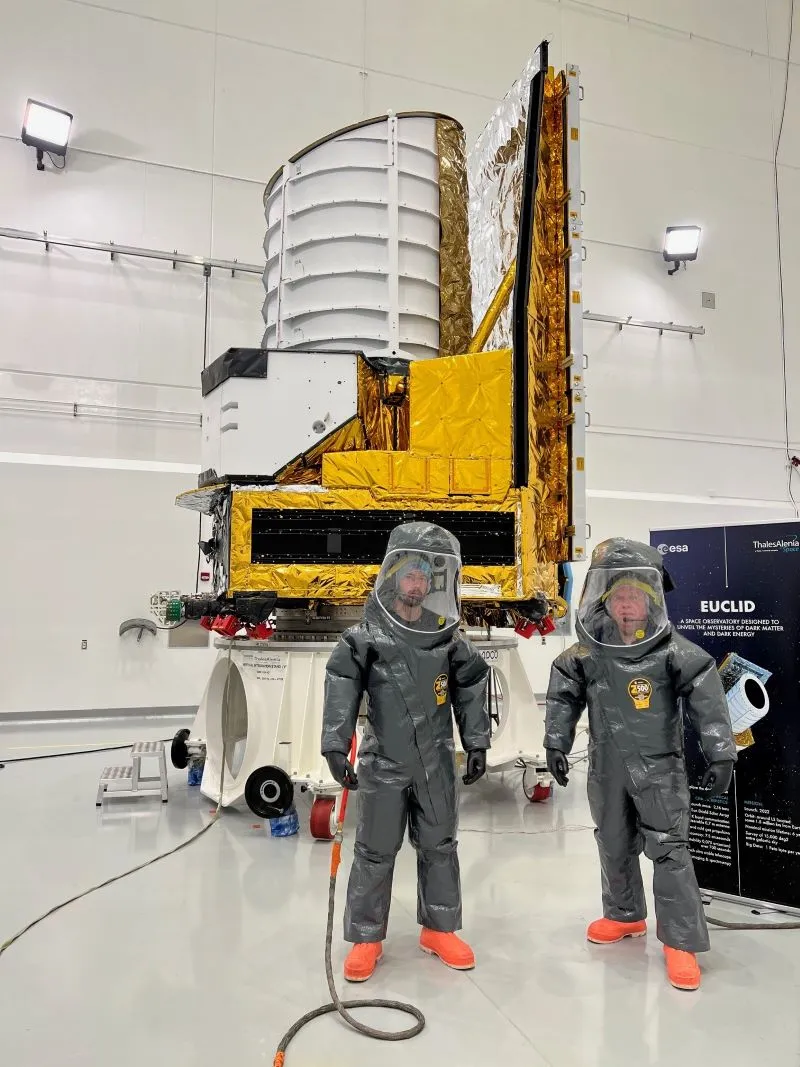
Chris Smith is managing director of European Astrotech, a subcontractor in the space sector that mainly carries out fueling and testing of propulsion systems, primarily in satellites but also for the upper stages of launch platforms.
Astrotech engineers are either called out for on-site testing and certification of propulsion systems – this includes launch systems – or run integrated propulsion system tests at its facility at Westcott, UK where they can conduct hazardous flow tests and hot fire testing. Smith says, “If it is a hazardous process, we get called in to do it.”
Smith believes it is unlikely electric thrusters will become the dominant technology for space propulsion in the near future, and instead believes a mix of solutions will be used. “You can’t land on the Moon with electric propulsion. There is not enough thrust at the right time,” he says.
“The kilowatt electric systems we have are very efficient and are good for building up speed over a long period, but if you want fast changes in velocity and direction, then right now it is best to use chemical propellants.
“There is a lot of new technology coming along, but a lot of it still needs to be proven. Electric propulsion is improving all the time and there are a lot of water-based propulsion systems being developed, because of the belief that we can tap into the resources of water on the Moon,” says Smith. “We helped qualify the Orion Service Module main engine valve against the MON oxidizer for Artemis. And we are going to be working with Thales on the Lunar Gateway’s propellant transfer system and the European Lunar Lander program, Argonaut.
“We are very busy and actively recruiting. There simply are not enough people available in the industry, so we are working hard to recruit young people into the company.”
High thrust test requirements
Nammo is one of five major global suppliers of in-space propulsion systems and components. It manufactures both monopropellant chemical and electric propulsion systems. Nammo’s thrusters range from 10 milliNewton cold gas to 1.5 kiloNewton engines and its propulsion components range covers solenoid valves, pressure regulators, non-return valves and flow control valves.
“We are one of the biggest suppliers of apogee engines. We produce most of the main engines for satellites that are on deep space missions together with Earth Orbiting satellite applications,” says Adam Watts, business development manager for Nammo.
Watts agrees that electric thrusters have limitations: “If you increase the size of electric thrusters too much the efficiency gains are not there. Electric thrusters are good for small regular pulses. For a fast dynamic maneuver you need a chemical system.”
At Westcott, UK Nammo jointly owns with the UK Space Agency, and operates the National Space Propulsion Test Facility (NSPTF). The NSPTF is one of only two test facilities in Europe that can conduct hot fire testing of large chemical engines, up to 1.5kN in a vacuum. The primary European facility is at DLR’s Lampholdshausen site in Germany.
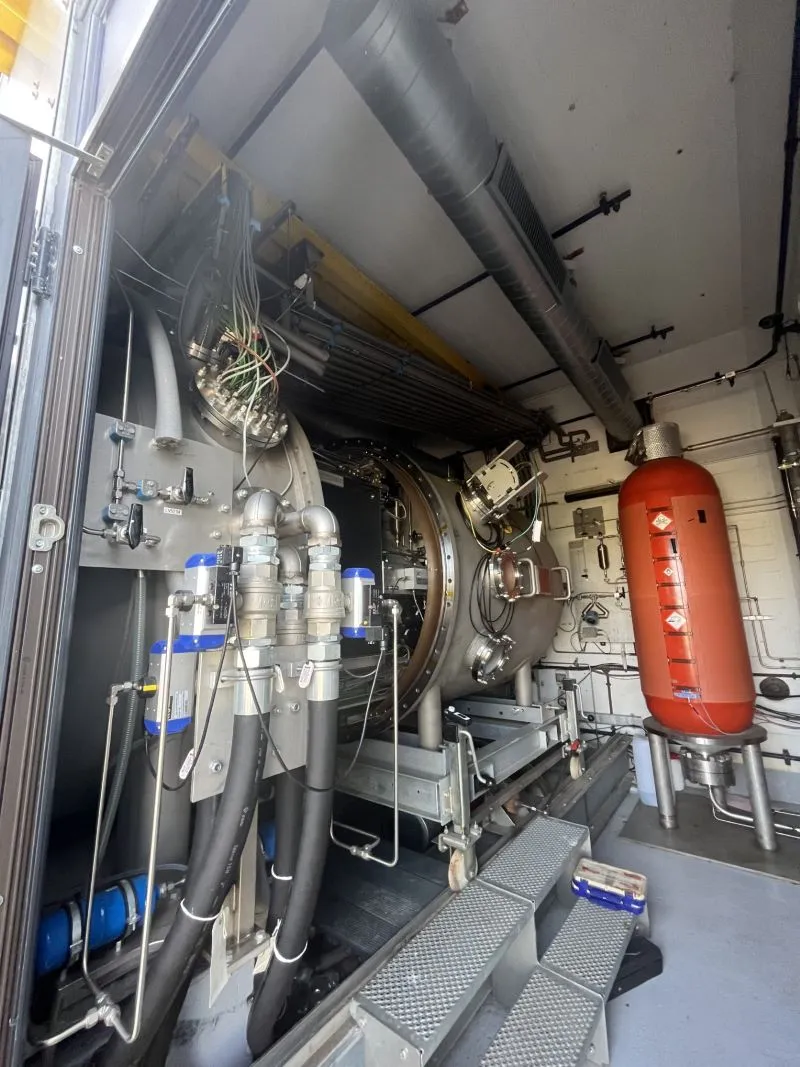
The NSPTF’s main large test cell was commissioned late last year and there is 12-month backlog of Nammo testing to work through. The facility is open for other companies to use, but there is a lead time.
The NSPTF uses an innovative design developed by Nammo. “We looked at other sites and how they work to see how to improve the process – most facilities use steam systems to create the vacuum in the cell, which takes a long time. We decided that we needed an electric pump system. It offers rapid startup and means we can turn around tests much faster and more efficiently,” says Watts. “The result is the biggest and most efficient testing facility of its type in the world.”
The NSPTF is used for acceptance and qualification testing of chemical rockets that are designed for the vacuum of space. Smaller engines can be tested in less than a day, while larger ones can take three days or more. It also handles long duration lifecycle testing for thrusters being used in deep space. A recently NSPTF-tested LEROS 1c engine for the ‘Lucy’ mission was fired on a mission for the first time in February on its way to Jupiter.
Nammo is also supplying its 1.3kN LEROS 4-ET engine to Firefly Aerospace in Texas, USA for use on its Blue Ghost Lunar Lander, a moon mission that is part of NASA’s CLIPS program.
Watts echoes that the trend for bigger satellites and spacecraft is driving the design and technology development of in-space propulsion systems. “Smaller satellites are getting bigger because SpaceX has reduced the launch cost, which means they need more capable and larger propulsion systems. While at the other end of the market, engines are also getting bigger because we are going to the Moon,” he says. “We are continuously looking to see if we need to increase the thrust range of the NSPTF more.”
Nammo is also working on Reliance, a 6.5-7.5kW engine that will be throttleable for ESA’s Argonaut spacecraft. This UK-developed engine will be initially tested in Germany during the early stages of the program.
Watts says, “Space propulsion is always about reliability and increasing efficiency. There are also new propellants coming. Nammo’s focus is on hydrogen peroxide. It can’t be stored for a long time, so it is only good for missions that will last up to three years, but it will be very useful on Lunar missions because it breaks down into water and oxygen.
“On the electric side, there are reports that sources of xenon are running low. It is incredibly expensive, it is the mass of the molecule that is key – the heavier it is the better for propulsion. People are looking at using krypton as a viable alternative instead,” says Watts.
Chemical Propellant types
Legacy chemical propellants are toxic, and are well-established and understood substances like hydrazine, which is used by SpaceX and the Dragon spacecraft for example.
Examples of green propellants include xenon, krypton and water. These are broken down through hydrolysis to recover the hydrogen which is then reformed or combusted. HTP Peroxide decomposes into steam, so is often included in this category.
New green propellants are less toxic and easier to handle. Examples include ASCENT and nitrous oxide.
The most commonly-used chemical propellants are hydrazine or Monomethylhydrazine (MMH) as a bi-propellant.


